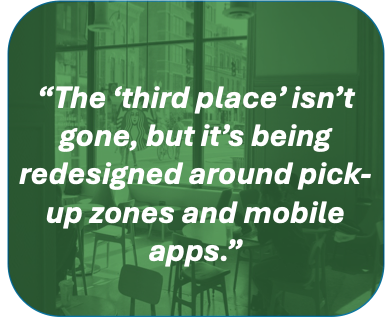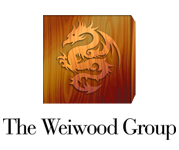BY JD Woods
A few days ago, Weiwood Group Practice Lead, Peter Lauria, and I were chatting on the “…and Here’s How Podcast” about the recent Starbucks headlines. They had just announced the closure of hundreds of underperforming stores and laying off nearly a thousand employees. On the surface, it’s a cost-cutting move. But beneath the headlines is a bigger question: what do today’s customers actually want from a place like Starbucks?
As a Gen X coffee drinker, I still miss the “third place” vibe that coffee shops promised – cozy, social spaces where you could sit for hours. Since we are a 100% virtual organization, coffee shops are also our primary meeting place. But, I understand that I’m not Starbucks’ core audience anymore. So what do Gen Z and younger millennials, the company’s most important customers, really value?
Who’s Buying Starbucks Now?

Starbucks’ most loyal base runs through its Starbucks Rewards app, which has nearly 34 million active U.S. members. That’s not just a big number, it’s a window into who drives sales: younger, digitally savvy customers who expect personalization and mobile-first experiences.
And what are they buying? Increasingly, it’s not hot coffee. Growth is coming from customizable, iced, specialty beverages, treats and pick-me-ups that are as much about identity and indulgence as caffeine.
What Gen Z Wants In-Store
Gen Z doesn’t view Starbucks as a cozy hideaway so much as a fast, flexible pit stop. Research shows:
-
Speed and convenience matter most, especially when stores are near other errands.
-
Customization is a deal-breaker: nearly half of Gen Z coffee drinkers call it a top driver.
-
Digital integration, mobile ordering, app offers, easy pickup, is part of the baseline expectation.
The “vibes” aren’t irrelevant. But for this demographic, the core value is how quickly and seamlessly a customized drink fits into their day.
But What About the Price Tag?
Here’s the catch: coffee isn’t immune from inflation. Coffee prices climbed roughly 12% year over year, and consumers are noticeably more selective with spending. “Nice-to-have” purchases like $7 lattes are easier to cut when budgets tighten.
That doesn’t mean experience is irrelevant. It means Starbucks has to balance value signaling (bundles, promos, rewards) with the kind of frictionless, customizable experience that convinces customers to keep coming back.

Lessons for Brands Beyond Coffee
Starbucks’ situation is just one example of a much bigger shift:
-
Format matters. Growth is leaning toward drive-thru and pickup, not sit-and-stay cafés.
-
Occasions are shifting. Cold, treat-like drinks are pulling traffic; morning drip coffee isn’t the only anchor.
-
Loyalty is a media channel. Apps and digital ecosystems now function like owned media networks.
-
Competition isn’t just cafés. Convenience stores and ready-to-drink options are siphoning off trips with their proximity and variety.
Questions Worth Asking
For leaders in any industry, Starbucks raises questions that go well beyond coffee:
-
If you had $1 to invest, would you spend it on speed and convenience or on ambiance and atmosphere?
-
How do you design loyalty programs that feel less like discounts and more like personalized experiences?
-
Where is your competition sneaking in from the edges, and how do you adapt before you lose share?
-
When is it smarter to cut back and streamline instead of chasing growth at all costs?
What do you think? Has Starbucks lost its “third place” soul, or is it simply evolving to match what customers actually want today?


